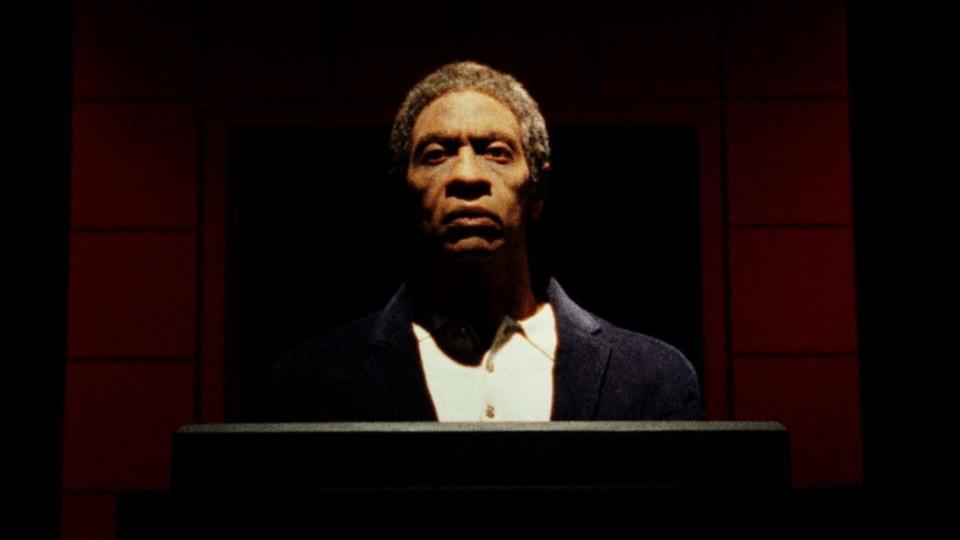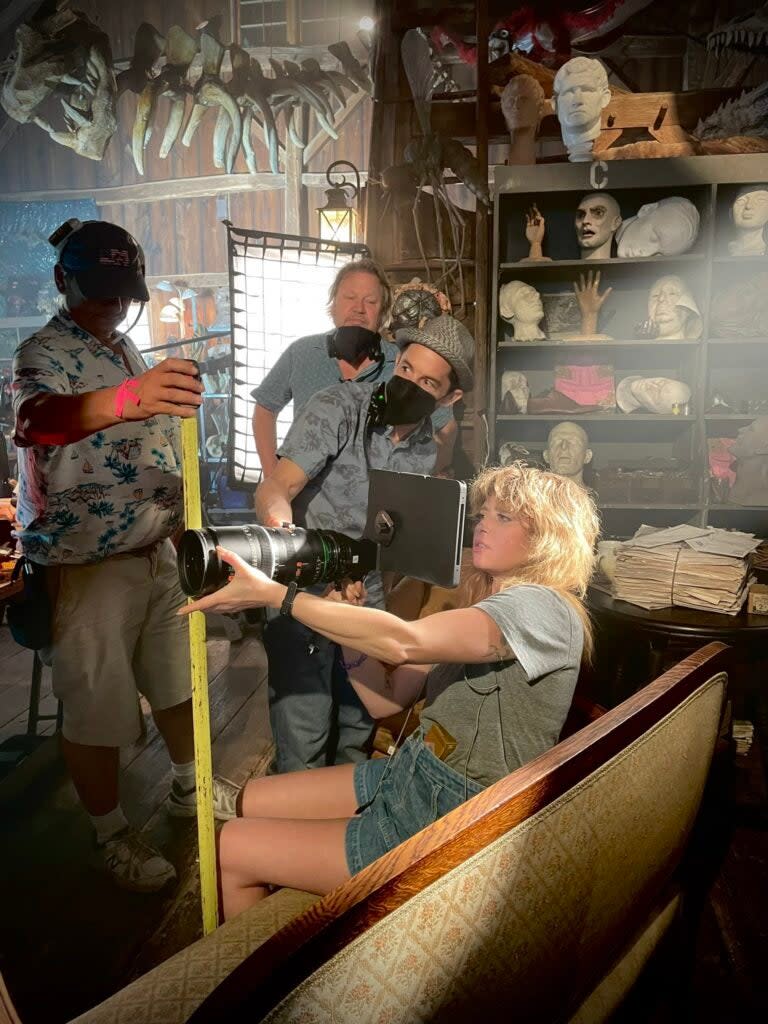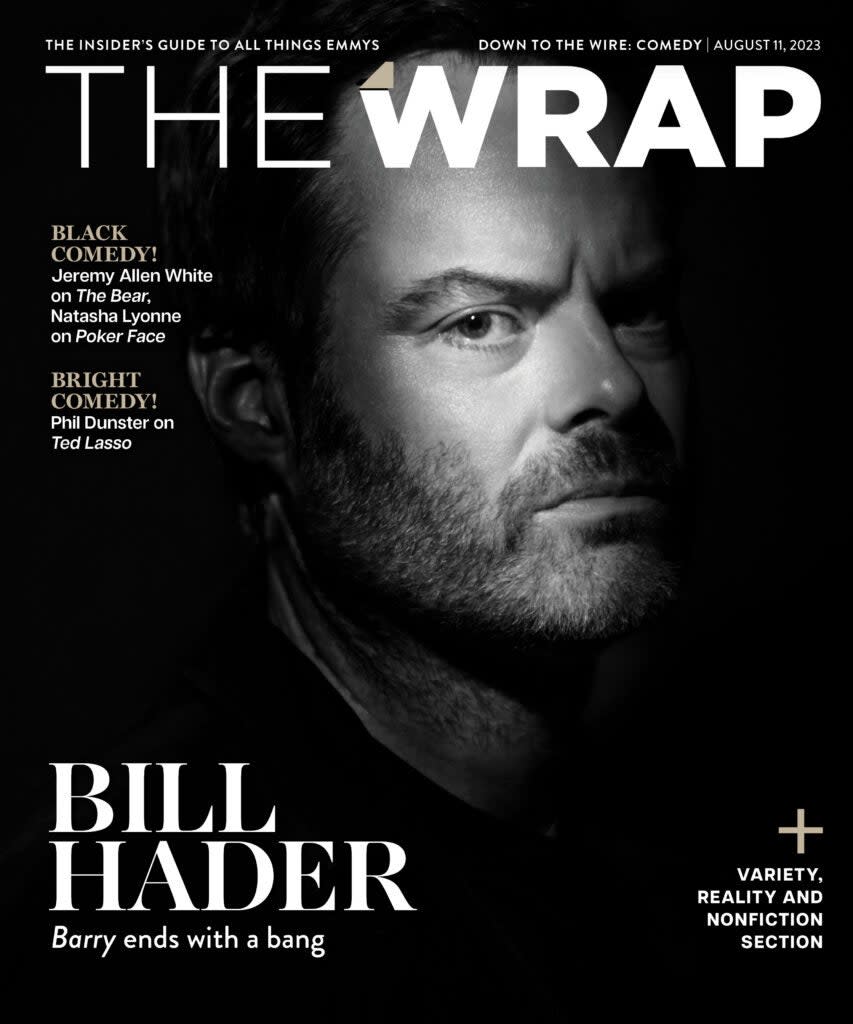How ‘Poker Face’ Pulled Off That Phil Tippett-Inspired Creature Episode
This story about the production design of “Poker Face” first appeared in the Down to the Wire: Comedy issue of TheWrap’s awards magazine.
Even in a galaxy far, far away, offscreen alliances can be forged that come in handy down the road. Director Rian Johnson had the great good fortune to meet stop-motion legend Phil Tippett (“Jurassic Park,” “RoboCop”) while he was working on 2017’s “Star Wars: The Last Jedi” at Skywalker Ranch near Tippett’s home, and the pairing led to “The Orpheus Syndrome,” one of the most satisfying episodes of Peacock’s sleuth comedy “Poker Face.” In the episode, a hermetic, Tippett-like designer (Nick Nolte), scarred by a filmmaking mishap years prior, finds himself blindsided by the schemes hatched up by his effects-house mogul boss (Cherry Jones), only to have the resourceful Charlie (Natasha Lyonne) interfere when she becomes his assistant.
“The Orpheus Syndrome” had the full blessing of Tippett, and sharp viewers will be able to spot his work sprinkled through the cluttered barn where Nolte’s character works. “In addition to the creations of the Orpheus creatures, Phil did give us about four or five pieces that we could use as background, and obviously we featured them because they were so fantastic,” said production designer Judy Rhee, who was disappointed she could not be on set when Tippett made a surprise visit. “He was very impressed by how the barn looked. And he loved how his pieces worked within the overall set with the other artists’ creatures.”

The episode, co-written and directed by star Lyonne, also utilizes a lush, Hitchcockian cliffside home in which Jones’ character is first seen watching her husband (Tim Russ) mysteriously leap to his death from the patio. She immediately and tearfully appeals to Nolte’s craftsman to create a bust of her late husband, the request turning out to be a way of fueling her shady ambitions rather than paying tribute to her departed partner.
The sculpture presented a serious challenge to Rhee and her department. “Tim, our actor, wasn’t cast until the very last minute,” Rhee said. “It was nail-biting, to say the least, to find a sculptor, a fabricator and a modelmaker who could do it within two weeks, and I think they turned it around in less than that.” While waiting for the piece to be finished, they shot scenes in which Russ played the bust himself, with a makeshift base hiding the fact that it was the actor, not the sculpture. “Tim was amazing,” she said. “In the final edit, we ended up using more of what we shot with him.”
The creation of LAM, a cheeky reimagining of the famous ILM (Industrial Light + Magic), is another major focal point within the episode. One of the funny ironies is the entire Hollywood-like town (and everywhere else) Charlie and the other characters traverse is all east coast. LAM’s imposing, pyramid-shaped headquarters is actually the IBM Somers Office Complex in Westchester County.
“That building was a nice discovery, and our location manager Chris Menges and his team did a fantastic job scouting for this,” said Rhee, who has previously worked on dramas ranging from “Better Call Saul” to “Jessica Jones.” “We saw a lot of office parks with sterile empty halls and spaces that didn’t really give us much to work with, so when he found this, we were just over the moon (about) that whole pyramid structure. And when we showed Natasha and Rian, they just loved it.”

Rhee received her first-ever Emmy nomination for “Poker Face,” and she credits Johnson, the great crews and the show’s quick-witted, indomitable star for their contributions.
“The Orpheus Syndrome,” by the way, was one of 10 episodes, each one taking place in a different location as Lyonne’s Charlie traverses the States, stopping everywhere from the arid desert to snowy mountains. “It was like doing 10 short films, one every 10 days,” Rhee said. “Thank God for the crew I had, I truly don’t know how it got done.” She laughed. “It’s a miracle and it’s all a big blur.”
Read more from the Comedy/Variety/Reality/Nonfiction issue here.

Photo by Jeff Vespa for TheWrap
The post How ‘Poker Face’ Pulled Off That Phil Tippett-Inspired Creature Episode appeared first on TheWrap.


